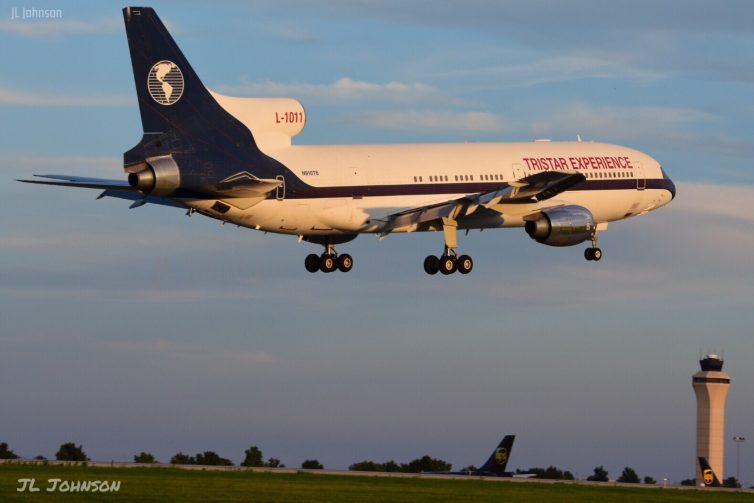
Lockheed L-1011 TriStar does a fly-by of Kansas City International Airport. – Photo: JL Johnson. Not for use elsewhere.
The Lockheed L-1011 TriStar was a plane with a tragically short lifespan. It was expected to be a real contender against the Boeing 747, Douglas DC-10, and Airbus A300. It entered the market late, in large part due to delays resulting from difficulty at Rolls-Royce, the only engine producer for the TriStar. Despite this, it is one of just a few airliners that elicits strong emotion from people of all ages and walks of life. It was received with much fanfare.
In business, however, fanfare does not necessarily equate to economic viability. In roughly two decades, just 250 units were produced – including an incredible number of custom variants. Few operators held onto their L-1011s for long before passing them along to others or sending them to storage. By most accounts, the TriStar was a failure. During development of the only TriStar engine option, the RB211, Rolls-Royce was deemed what modern day observers would call “too big to fail.” It was nationalized to avoid catastrophic economic impact to the United Kingdom and to keep the costly program afloat. Following the cancellation of the series, Lockheed fully withdrew from the commercial airliner market to focus on military and other industries.
But struggles in development, lackluster sales, and frequent turnover did not get in the way of the passion shared by those who had in some way experienced the TriStar. It was and is one of the most beloved planes in AvGeek culture. The TriStar was an underdog. People love an underdog story, and that is just what this is.
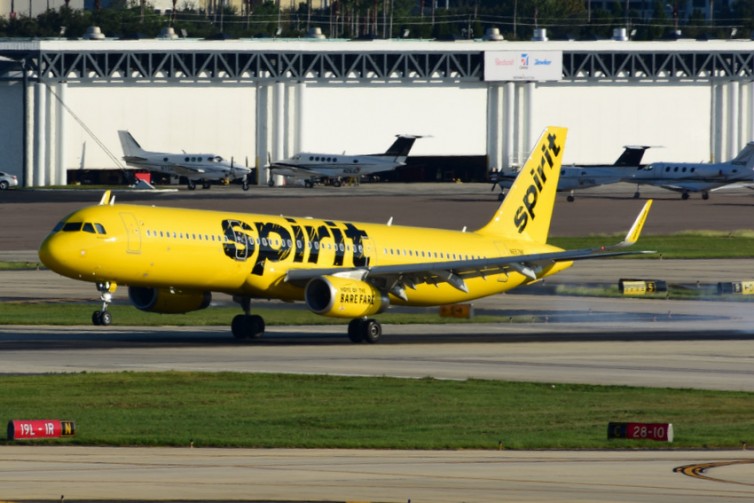
A Spirit Airlines Airbus A321 wearing the Bare Fare livery at TPA – Photo: JL Johnson | AirlineReporter
I paid a mere $16.11 for a one-way Spirit Airlines Bare Fare flight from Kansas City to Dallas. Crazy, right? It gets crazier $14.24 of that ticket went to the “Government’s Cut,” (Spirit’s words, not mine) that is, various government-imposed fees and taxes. Of the remainder, a single penny went towards the base fare, with the final $1.86 going to what Spirit refers to as “Unintended Consequences of DOT Regulations.” Depending on where you sit on the regulatory fence, the actual revenue from my Bare Fare was either a penny or $1.87.
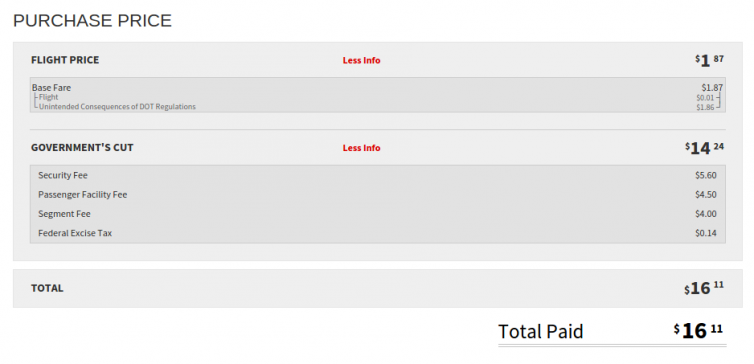
Spirit Airlines Bare Fare cost structure breakdown – Image: Spirit.com
Either way, the airline was bound to make money off of me from their various fees, right? After all, that’s what Spirit is known for: evil fees. But, what if I went totally bare and instead just paid only for “ass plus gas” (again, Spirit’s words, not mine). Do people actually do that? I did… for science.
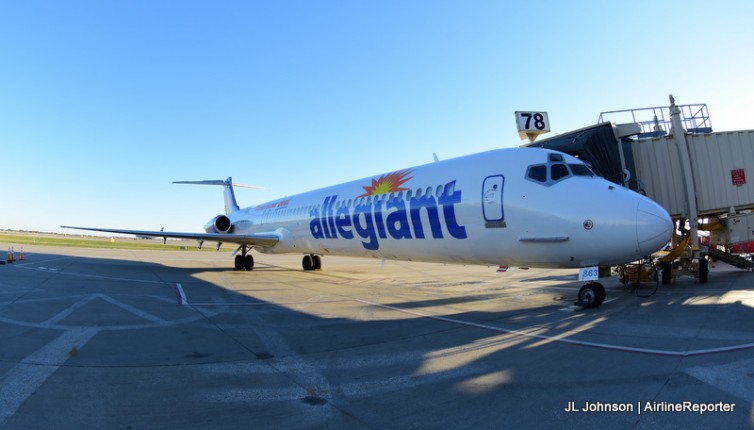
N863GA, a 26-year young MD-83
Earlier this year, I was excited to learn Allegiant would be the newest airline to bring service to my home market here in Kansas City, MO. Allegiant was the last piece of the puzzle to complete the ultra-low-cost carrier (ULCC) trifecta. So, naturally I had to be on their very first flight out.
Just last year Spirit inaugurated services at Kansas City International and in the following months brought with them unprecedented fare disruption across multiple markets. The effects were unlike any I have witnessed in a decade of paying close attention to fare trends in KC. And herein lies the secret with ULCCs; even if passengers never intend to fly with them, they bring normalcy to entire markets with LCCs and even legacies adjusting their own fare structures to keep from losing too much market share.
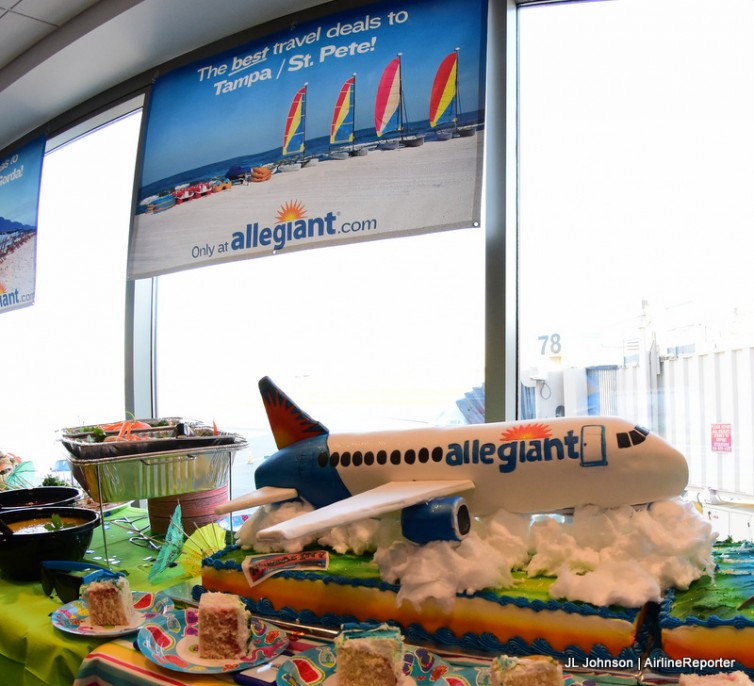
Inaugural Cake! An A319?
New airline aside, I’m a bit of an inaugural hound. When the day came, I elected to skip the press conference and focus on becoming the first confirmed booking, which I’m proud to announce I accomplished, while the press conference was still going, in fact.
As I tend to do, I booked the outbound leg, making a mental note to fill in the rest of the details “later” – I wound up scrambling to find a way home. When I realized I was one week from my trip with no way home, I went to my preferred carrier who wanted nearly $300 one way. This, in contrast to the mere $82 (fare + exit row + carry-on) I paid Allegiant outbound. Reluctantly, I looked elsewhere and found similar prices. I soon realized what began as a one-way experiment with Allegiant would wind up being a round trip with them out of equal parts laziness, frugality, desperation, and curiosity.
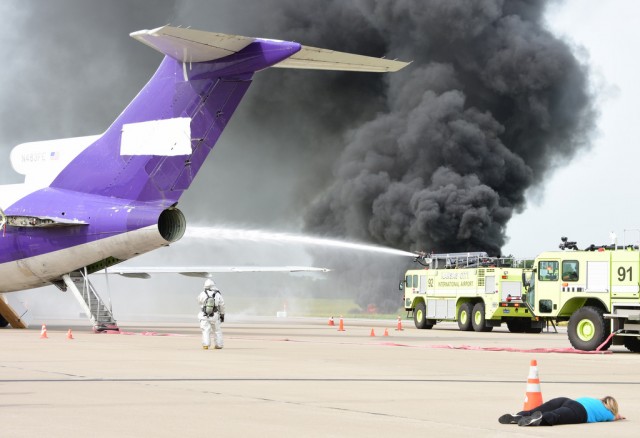
Full-scale disaster drill at Kansas City International, in full swing – Photo: JL Johnson | AirlineReporter
Practice makes perfect. And in the realm of aviation safety drills, it also creates incredible experiences for willing volunteers. Kansas City International Airport (MCI, or KCI as it’s referred to by the locals) recently hosted their triennial emergency exercise, and I was fortunate enough to score a role as a victim. I was told this was a full-scale drill from the beginning, but wasn’t sure exactly what to expect.
The closest I’ve ever been to anything remotely resembling an emergency was on my very first Airbus A320 flight just a few years ago from Minneapolis (MSP) to Pittsburgh (PIT). It was late, and after a typical approach the engines roared and we were on steep climb. Upon leveling off, the Delta captain came on to tell us we had briefly “lost steering.” After a missed approach and a fly-by, we landed uneventfully, were greeted by an ARFF (aircraft rescue and firefighting) escort, and towed to the gate. This experience, plus participating in some rudimentary safety training with Delta during last year’s #InsideDelta event, formed the foundation for my expectations.
I would soon learn I had no idea how disasters really play out, especially on the ground’¦
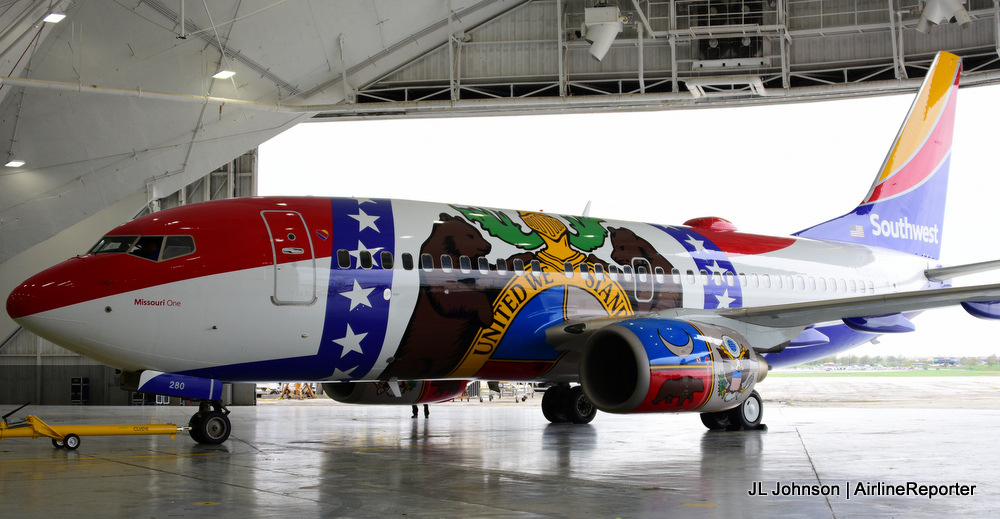
N280WN, the new Missouri One, pushes out of an ATI hanger in Kansas City
I adore Southwest Airlines and I’m a proud Missourian. Can you imagine how excited I was to attend last week’s special event?! As soon as my Missouri-centric invite came through, I knew we were dealing with a Missouri One, but held back as I didn’t want to ruin the fun. Those who fancy themselves Southwest experts knew something might be up when N280WN (Penguin One- a SeaWorld plane overdue for de-livery as a result of contract termination) entered the paint shop in Spokane, Washington but never left. What could cause such a delay in the paint shop? A new livery, of course!
My first thought when I put two and two together: “Isn’t our state flag kind of boring?” Okay, fine. It is. But our state seal is pretty sweet and thankfully the folks at Southwest and their advertising firm GSD&M took a bit of artistic privilege. The result? My new favorite special-liveried bird. This isn’t the first time they’ve had little to work with, yet hit a home run. Has anyone seen Florida or Nevada’s state flags? Sort of dull, but absolutely stunning on a 737.






